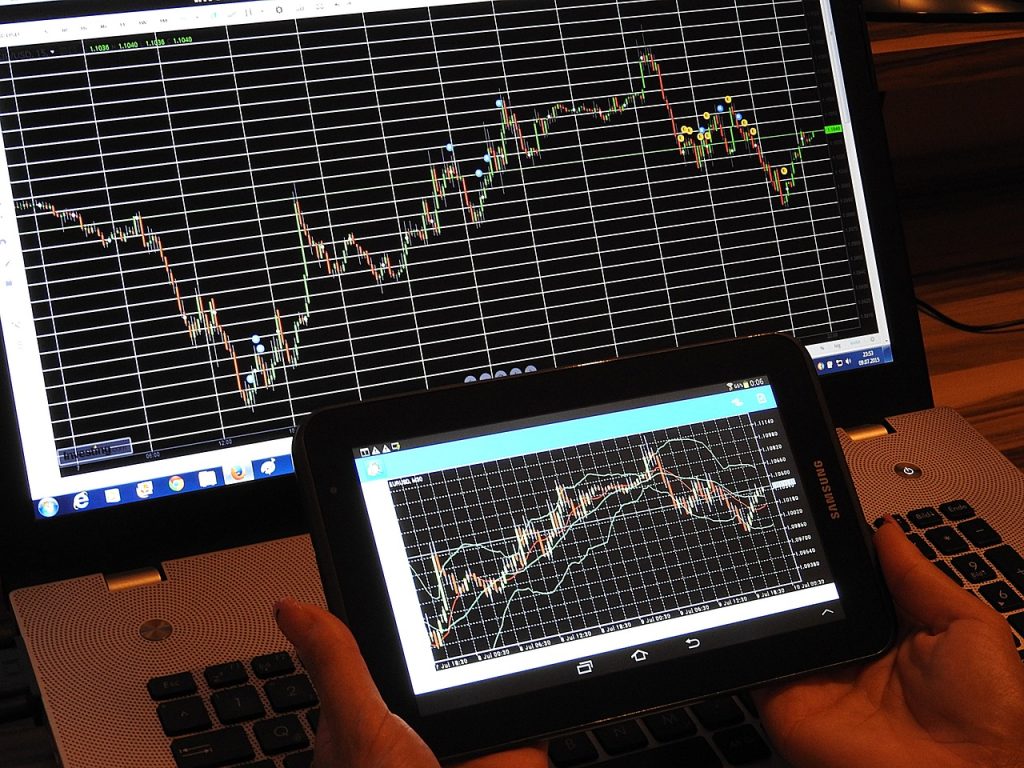Commodity trading has long been a cornerstone of global financial markets, offering investors unique opportunities to diversify their portfolios and hedge against inflation. In the USA, this form of trading has gained significant traction, attracting both individual and institutional investors. This article delves into the power of commodity trading, its benefits, and how to get started in the US market.
What is Commodity Trading?
Commodity trading involves buying and selling physical goods or raw materials like gold, oil, natural gas, agricultural products, and more. These commodities are traded on exchanges such as the New York Mercantile Exchange (NYMEX) and the Chicago Board of Trade (CBOT). The trading can be done through futures contracts, options, and exchange-traded funds (ETFs).
Benefits of Commodity Trading
1. Diversification
Commodity trading allows investors to diversify their portfolios beyond traditional stocks and bonds. Since commodities often have low correlation with other asset classes, they can help reduce overall portfolio risk.
2. Inflation Hedge
Commodities like gold and oil often retain or increase their value during inflationary periods. This makes them an effective hedge against the declining purchasing power of money.
3. High Liquidity
Commodity markets, especially for widely traded goods like gold and crude oil, are highly liquid. This means investors can easily enter and exit positions, making it a flexible investment option.
4. Leverage
Commodity trading often involves the use of leverage, allowing traders to control large positions with a relatively small amount of capital. While this can amplify profits, it also increases the risk of losses.
How to Get Started with Commodity Trading in the USA
1. Understand the Market
Before diving into commodity trading, it’s crucial to understand the market dynamics, including supply and demand factors, geopolitical events, and seasonal trends that can impact prices.
2. Choose the Right Brokerage
Selecting a reputable brokerage with a strong presence in commodity markets is essential. Look for brokers that offer robust trading platforms, research tools, and competitive fees.
3. Develop a Trading Plan
A well-defined trading plan is critical for success. This should include your investment goals, risk tolerance, and strategies for entry and exit points.
4. Stay Informed
Keeping up with market news, economic reports, and geopolitical events is vital. Subscribing to financial news services and using analytical tools can provide valuable insights.
Popular Commodities to Trade in the USA
1. Gold
Gold is one of the most popular commodities due to its status as a safe-haven asset. Investors flock to gold during times of economic uncertainty.
2. Crude Oil
Crude oil is a key commodity, influencing global economic activity. Its price is affected by factors such as geopolitical tensions, OPEC decisions, and technological advancements in energy production.
3. Natural Gas
Natural gas is essential for heating and electricity generation. Its prices are influenced by weather conditions, storage levels, and production rates.
4. Agricultural Products
Commodities like corn, wheat, and soybeans are staple agricultural products. Their prices are impacted by weather conditions, crop yields, and global demand.
Risks Involved in Commodity Trading
1. Price Volatility
Commodity prices can be highly volatile, influenced by factors such as weather events, political instability, and changes in supply and demand.
2. Leverage Risks
While leverage can amplify profits, it also increases the potential for significant losses. Traders must use leverage cautiously and understand the associated risks.
3. Market Risks
Commodity markets can be influenced by unexpected events, leading to sudden price changes. Staying informed and using risk management strategies is crucial.
Strategies for Successful Commodity Trading
1. Technical Analysis
Using charts and technical indicators can help traders identify trends and potential entry and exit points. Common indicators include moving averages, RSI, and MACD.
2. Fundamental Analysis
Understanding the underlying factors that affect commodity prices, such as economic data, geopolitical events, and weather patterns, is essential for making informed trading decisions.
3. Risk Management
Implementing risk management strategies, such as setting stop-loss orders and using position sizing techniques, can help mitigate potential losses.
Conclusion
Commodity trading offers a powerful avenue for diversifying investment portfolios and hedging against inflation. While the market presents various risks, understanding the dynamics and employing sound trading strategies can lead to significant financial opportunities. For investors in the USA, staying informed and disciplined is key to unlocking the full potential of commodity trading.
Ready to explore the power of commodity trading? Start by researching reputable brokers, understanding market trends, and developing a solid trading plan. Embrace the opportunities and challenges of this dynamic market to enhance your financial portfolio.

